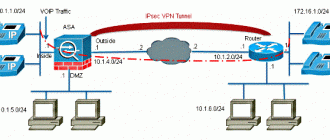Cisco’s implementation of RED, called Weighted Random Early Detection (WRED), combines the capabilities of the RED algorithm with IP Precedence. This combination provides for preferential traffic handling for higher priority packets. It can selectively discard lower priority traffic when the interface begins to get congested, and provide differentiated performance characteristics for different classes of service. WRED differs from other congestion management techniques such as queuing strategies because it attempts to anticipate and avoid congestion rather than controlling congestion once it occurs.
WRED is useful on any output interface where you expect to have congestion. However, WRED is usually used in the core routers of a network, rather than the network’s edge. Edge routers assign IP precedences to packets as they enter the network. WRED uses these precedences to determine how it treats different types of traffic. WRED provides separate thresholds and weights for different IP precedences, allowing you to provide different qualities of service for different traffic. Standard traffic may be dropped more frequently than premium traffic during periods of congestion.
Let’s take a look at how WRED works.
By randomly dropping packets prior to periods of high congestion, WRED tells the packet source to decrease its transmission rate. Assuming the packet source is using TCP, it will decrease its transmission rate until all the packets reach their destination, indicating that the congestion is cleared. WRED generally drops packets selectively based on IP Precedence. Packets with a higher IP Precedence are less likely to be dropped than packets with a lower precedence. Thus, higher priority traffic is delivered with a higher probability than lower priority traffic. However, you can also configure WRED to ignore IP precedence when making drop decisions so that non weighted RED behavior is achieved. WRED is also RSVP-aware, and can provide integrated services controlled-load QoS service.
WRED reduces the chances of tail drop by selectively dropping packets when the output interface begins to show signs of congestion. By dropping some packets early rather than waiting until the buffer is full, WRED avoids dropping large numbers of packets at once and minimizes the chances of global synchronization. Thus, WRED allows the transmission line to be used fully at all times. In addition, WRED statistically drops more packets from large users than small. Therefore, traffic sources that generate the most traffic are more likely to be slowed down than traffic sources that generate little traffic.
QoS Signalling
Resource Reservation Protocol
RSVP is the first significant industry-standard protocol for dynamically setting up end-to-end QoS across a heterogeneous network. RSVP provides transparent operation through routers that do not support RSVP.
Explained simply, RSVP is the ability for an end station or host to request a certain level of QoS across a network. RSVP carries the request through the network, visiting each node that the network uses to carry the stream. At each node, RSVP attempts to make a resource reservation for the data stream. RSVP is designed to utilize the robustness of current IP routing algorithms. This protocol does not perform its own routing; instead, it uses underlying routing protocols to determine where it should carry reservation requests.

